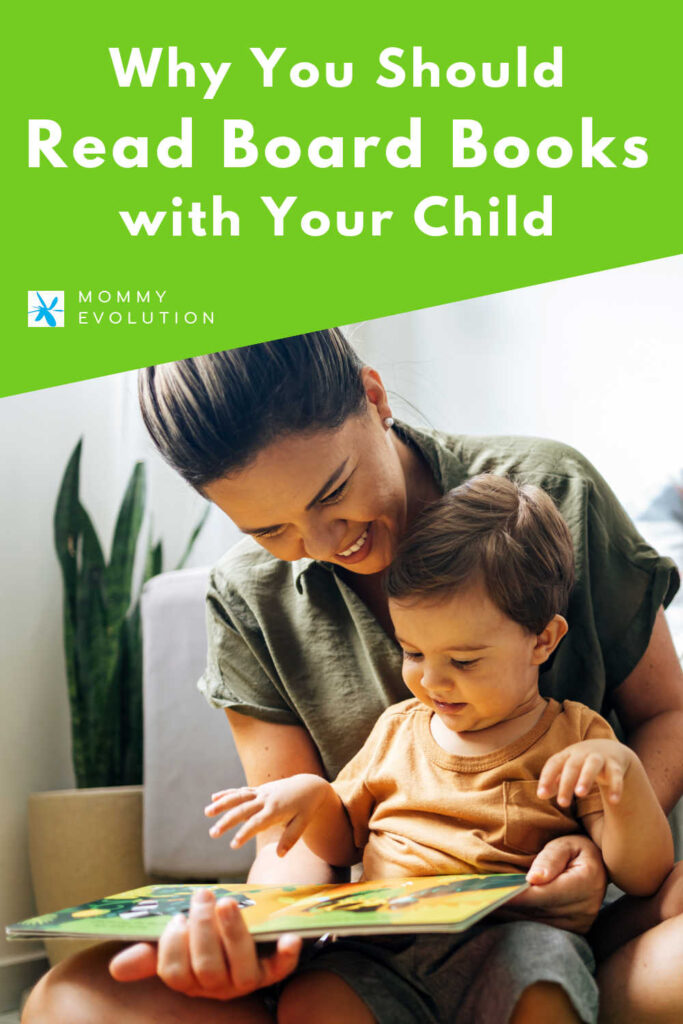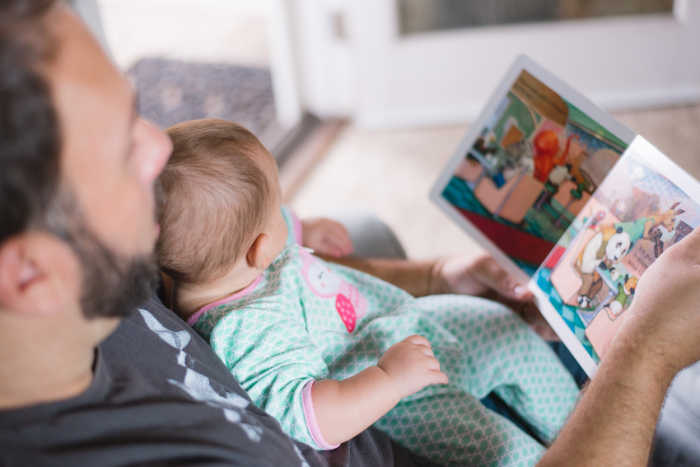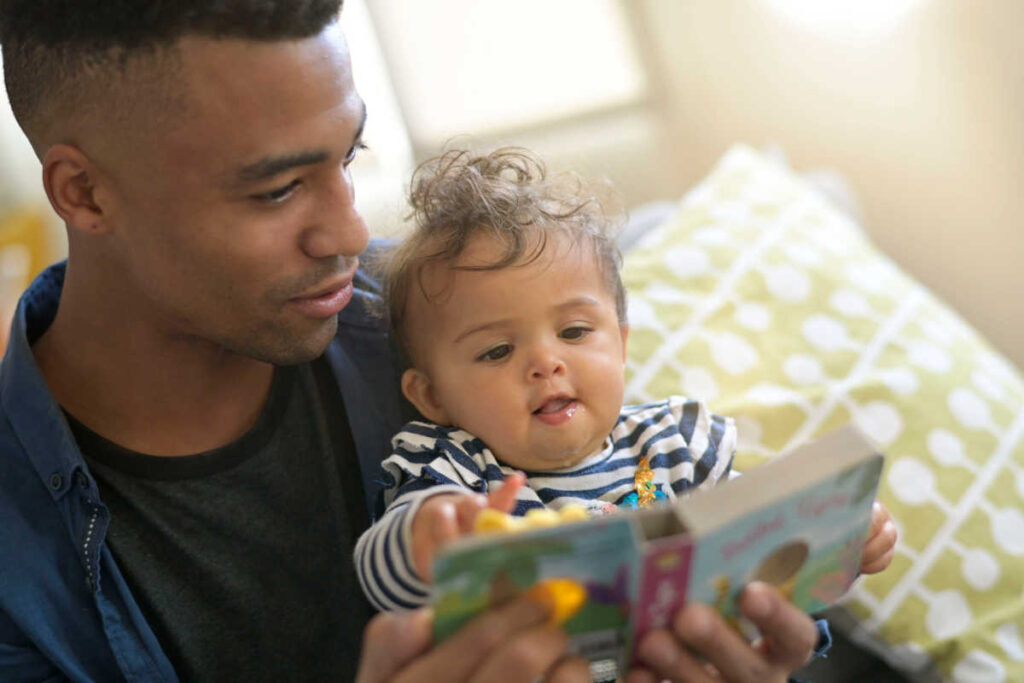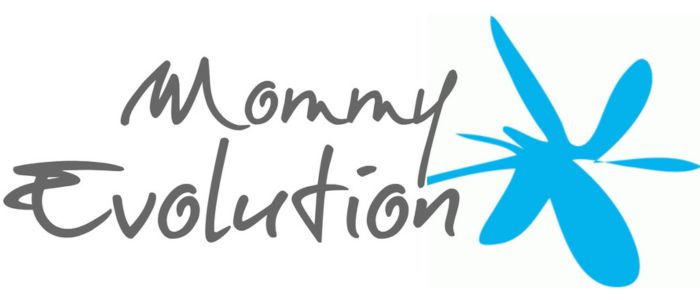Why Baby Board Books
Introducing your infant to baby board books goes beyond the adorable illustrations and vibrant colors. It’s a deliberate decision rooted in the understanding that the early years lay the foundation for a lifetime of learning and cognitive development.
Let’s unravel the significance of baby board books and explore why they are indispensable tools in shaping a child’s cognitive, emotional and social growth.
This post contains affiliate links.

What Are Baby Board Books
Baby board books are a genre of children’s literature specifically designed for infants and toddlers.
These Best Baby Books are characterized by their unique format, featuring thick cardboard or “board” pages that are durable and easy for small hands to handle.
The First Years First Baby Rattle Manhattan Toy Winkel Rattle & Sensory Teether
Manhattan Toy Winkel Rattle & Sensory Teether Yiosion Baby Rattles Set
Yiosion Baby Rattles Set Baby Teether Rattles Set
Baby Teether Rattles Set
Unlike traditional paper books, board books for babies are built to withstand the wear and tear that often accompanies interactions with very young children.

Some terrific examples include First 100 Words Board Books, Animal Board Books and Best New Books for Babies and Best Baby Books.
Why Baby Board Books
Baby board books serve as a unique and invaluable format in children’s literature for several reasons:
Introduction to Reading: Board books are an ideal introduction to the world of reading. Their concise narratives and repetitive structures are well-suited to capture a young child’s attention and build early language skills.
Durability: Baby board books are made with thick, sturdy pages, typically constructed from cardboard or other resilient materials. This durability makes them resistant to wear and tear, perfect for the sometimes less-than-gentle handling of young children.
Early Exposure to Books: Board books are often a child’s first introduction to the world of books. They play a crucial role in instilling an early love for reading and cultivating a lifelong appreciation for literature.
What to Expect the First Year The Simplest Baby Book in the World: The Illustrated, Grab-and-Do Guide for a Healthy, Happy Baby
The Simplest Baby Book in the World: The Illustrated, Grab-and-Do Guide for a Healthy, Happy Baby Cribsheet: A Data-Driven Guide to Better, More Relaxed Parenting, from Birth to Preschool (The ParentData Series)
Cribsheet: A Data-Driven Guide to Better, More Relaxed Parenting, from Birth to Preschool (The ParentData Series) Caring for Your Baby and Young Child, 7th Edition: Birth to Age 5
Caring for Your Baby and Young Child, 7th Edition: Birth to Age 5
Interactive Learning: With their tactile and interactive design, board books engage children in a multisensory reading experience. Little hands can grasp, turn pages, and explore textures, enhancing both fine motor skills and cognitive development.

Safety: Board books are often chosen for very young children who are still in the stage of exploring objects by putting them in their mouths. The robust construction minimizes the risk of pages being torn off and swallowed.
Visual Appeal: Bright, colorful illustrations and simple, bold shapes characterize many board books. These visual elements are captivating for infants and toddlers, promoting visual development and early literacy skills.
Early Literacy Skills: The combination of engaging stories, vibrant illustrations, and the tactile experience of handling board books contributes to the development of essential early literacy skills such as vocabulary building, print awareness and comprehension.
Specialized Content: Baby board books cover a wide range of themes and topics tailored to the interests and developmental stages of young readers. There are board books specifically designed to introduce concepts like numbers, colors, shapes and even emotions.
The Shit No One Tells You The Happiest Baby on the Block; Fully Revised and Updated Second Edition: The New Way to Calm Crying and Help Your Newborn Baby Sleep Longer
The Happiest Baby on the Block; Fully Revised and Updated Second Edition: The New Way to Calm Crying and Help Your Newborn Baby Sleep Longer The Montessori Baby: A Parent’s Guide to Nurturing Your Baby with Love, Respect, and Understanding
The Montessori Baby: A Parent’s Guide to Nurturing Your Baby with Love, Respect, and Understanding Bringing Up Bébé: One American Mother Discovers the Wisdom of French Parenting (now with Bébé Day by Day: 100 Keys to French Parenting)
Bringing Up Bébé: One American Mother Discovers the Wisdom of French Parenting (now with Bébé Day by Day: 100 Keys to French Parenting)
Sharing and Bonding: The sturdy nature of board books makes them conducive to shared reading experiences. Parents and caregivers can comfortably read with children, fostering a love for books and creating positive associations with reading time.

Ultimately, board books are not only practical in terms of durability and safety but also play a vital role in laying the foundation for a child’s literacy development and fostering a positive attitude toward reading from a very young age.
When Baby Board Books
Baby board books are typically introduced to infants and toddlers, usually starting around the age of 6 months and continuing through the toddler years.
At around 6 months, when babies are honing their motor skills, board books with bold images, high-contrast colors, and basic shapes become visually stimulating. These books often include tactile elements like textures or lift-the-flap features, engaging the developing senses.
As infants progress to 9-12 months, their intentional grasp on objects opens up opportunities for more interactive board books with larger pages and basic concepts such as animals or everyday objects.
VTech Baby Explore and Crawl Elephant Musical Turtle Crawling Baby Toy
Musical Turtle Crawling Baby Toy VTech Exercise & Fitness Wiggle and Crawl Ball
VTech Exercise & Fitness Wiggle and Crawl Ball VTech Push & Explore Elephant
VTech Push & Explore Elephant
Toddlers aged 12-24 months, with a growing vocabulary and curiosity, benefit from board books featuring repetitive phrases, rhymes, and participation elements that enhance language development.

The key is to make reading a positive and enjoyable experience, observing the child’s cues and nurturing a love for books from the earliest stages of development.


















